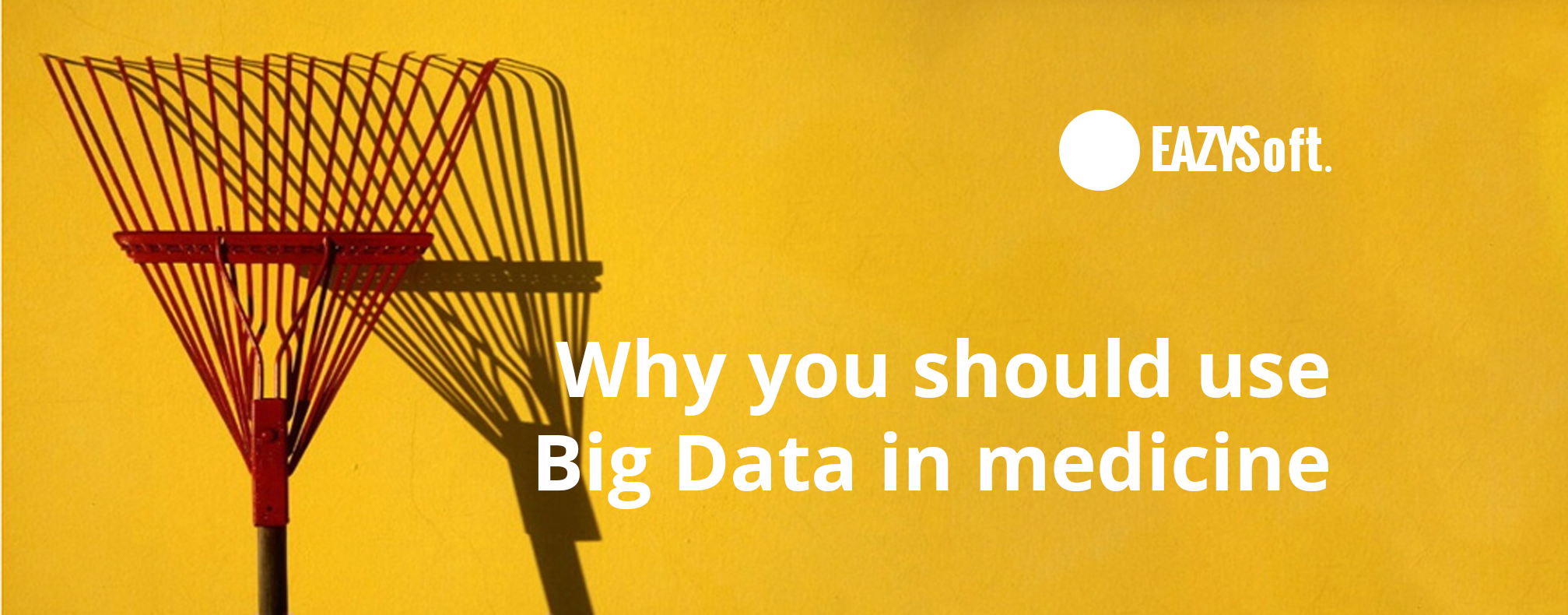
Why you should use Big Data in medicine
Health care may have gotten off to a slower start than some industries in taking full advantage of big data. But today, sophisticated sensors connected through the IoT are used on medical equipment and patients’ bodies, and in wearables like clothing, watches and glasses. Now many organizations in this data-rich industry are focused on using big data and analytics to make life-altering changes in patient education, treatment and more.
Big Data is a hot topic, not just in healthcare sector but in general problem solving. It is very important to understand what is the big data in the mentioned sector. As we all know, human body is one of the most complicated machine and hence the data associated with it. There are various data patterns related to human habits, diseases, medical procedures, life expectancy, epidemy etc. The role of big data in medicine is one where we can build better health profiles and better predictive models around individual patients so that we can better diagnose and treat disease.
What is big data?
The term “Big Data” may have been around for some time now, but there is still quite a lot of confusion about what it actually means. In truth, the concept is continually evolving and being reconsidered, as it remains the driving force behind many ongoing waves of digital transformation, including artificial intelligence, data science and the Internet of Things.
Big data is high-volume, high-velocity and/or high-variety information assets that demand cost-effective, innovative forms of information processing that enable enhanced insight, decision making, and process automation.
Big Data works on the principle that the more you know about anything or any situation, the more reliably you can gain new insights and make predictions about what will happen in the future.
5 ways healthcare can use Big Data
Preventing medication errors
Medication errors are a serious problem in healthcare organizations. Because humans will always make the occasional error (even something as simple as choosing the wrong medication in a pull-down menu), patients sometimes end up with the wrong medication—which could cause harm or even death. Big data can help reduce these error rates dramatically by analyzing the patient’s records with all medications prescribed, and flagging anything that seems out of place.
Unfortunately, as with many big data initiatives in healthcare, there are some roadblocks to widespread adoption. Due to the age of many healthcare IT systems, implementation of these devices can be slow to catch on. Additionally, healthcare data is very sensitive, and organizations have to be very careful about security and compliance with federal regulations.
Identifying high-risk patients
Many healthcare systems have to contend with high rates of patients repeatedly using the emergency department, which drives up healthcare costs and does not lead to better care or outcomes for these patients. Using predictive analytics, some hospitals have been able to reduce the number of ER visits by identifying high-risk patients and offering customized, patient-centric care. Currently, one of the major hurdles to overcome in identifying high-risk patients is lack of data. Overall, there are simply too few data points, making it near impossible to get an accurate picture of the real risks, as well as the reasons for these risks.
Reducing hospital costs and wait time
As with many other industries, there is enormous potential for cutting costs with big data in healthcare. There’s also an opportunity to reduce wait times—something that costs everyone money. By predicting admission rates over the next two weeks, the hospital can then allocate staff based on those numbers. There are so many ways hospitals could cut costs using predictive analytics, but few organizations have done so yet. They may be replacing old equipment with new cutting-edge technology or allocating money elsewhere, despite the fact that they could save millions.
Preventing security breaches & fraud
According to one study, the healthcare industry is 200% more likely to experience a data breach than other industries, simply because the personal data is so valuable. With this in mind, some organizations have used big data to help prevent fraud and security threats. Unfortunately, in addition to the preventative benefits of big data, there are also some big security risks. Many organizations are wary of making themselves more vulnerable than they already are, which is understandable considering federal patient information regulations.
Enhancing patient engagement & outcomes
Consumer interest in devices that monitor steps taken, hours slept, heart rate, and other data on a daily basis shows that introducing these devices as a physician aid could help improve patient engagement and outcomes. New wearables can track specific health trends and relay them back to the cloud where they can be monitored by physicians. This can be helpful for everything from asthma to blood pressure, and help patients stay independent and reduce unnecessary doctors’ visits. These wearables are unfortunately still in their infancy, and complications with insurance, software compatibility, and many other obstacles are currently limiting their usefulness.
The future of big data is already beginning to affect the health care and medical industries. More data will also mean greater demand for cybersecurity professionals and information systems experts to be able to determine how to not only ensure all technologies work together, but that confidential information can be kept out of the wrong hands. Still, these developments signal a shift from purely market-based technology to more critical, life-saving technology, meaning more jobs in the healthcare and medical sector, as well.
